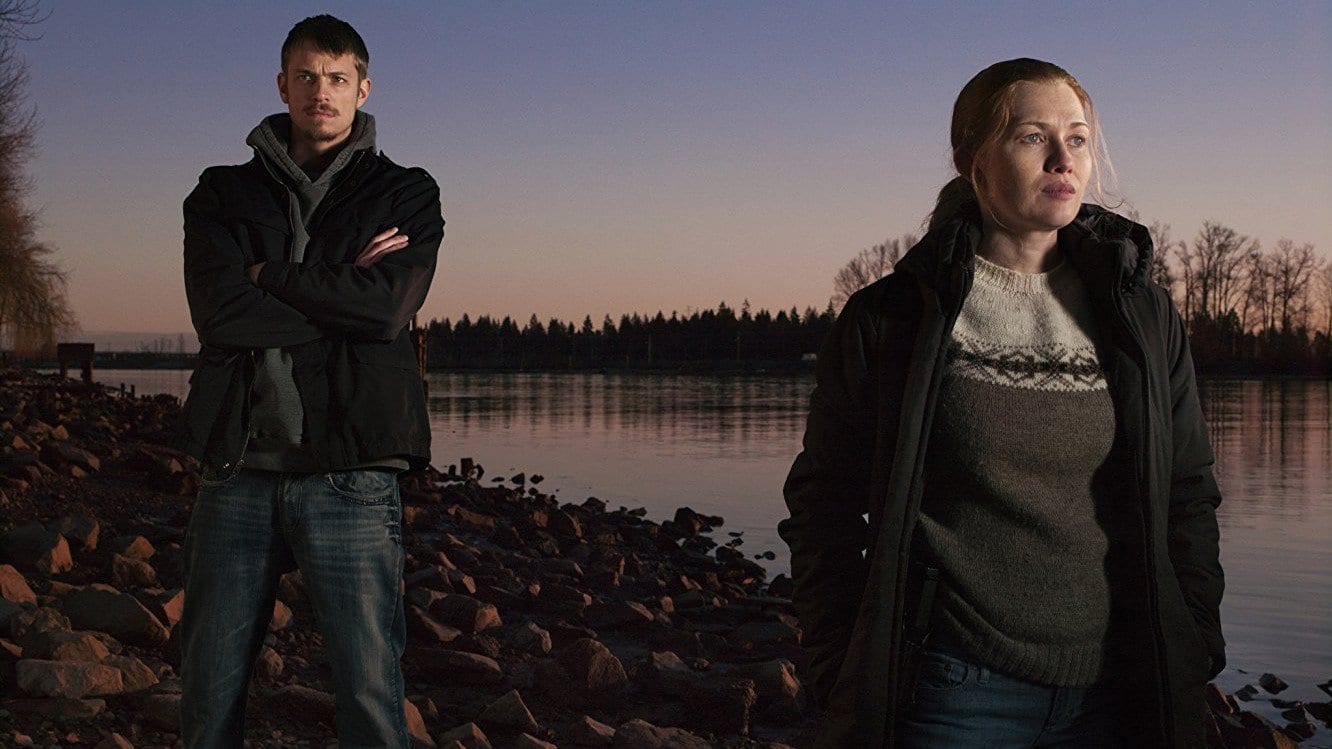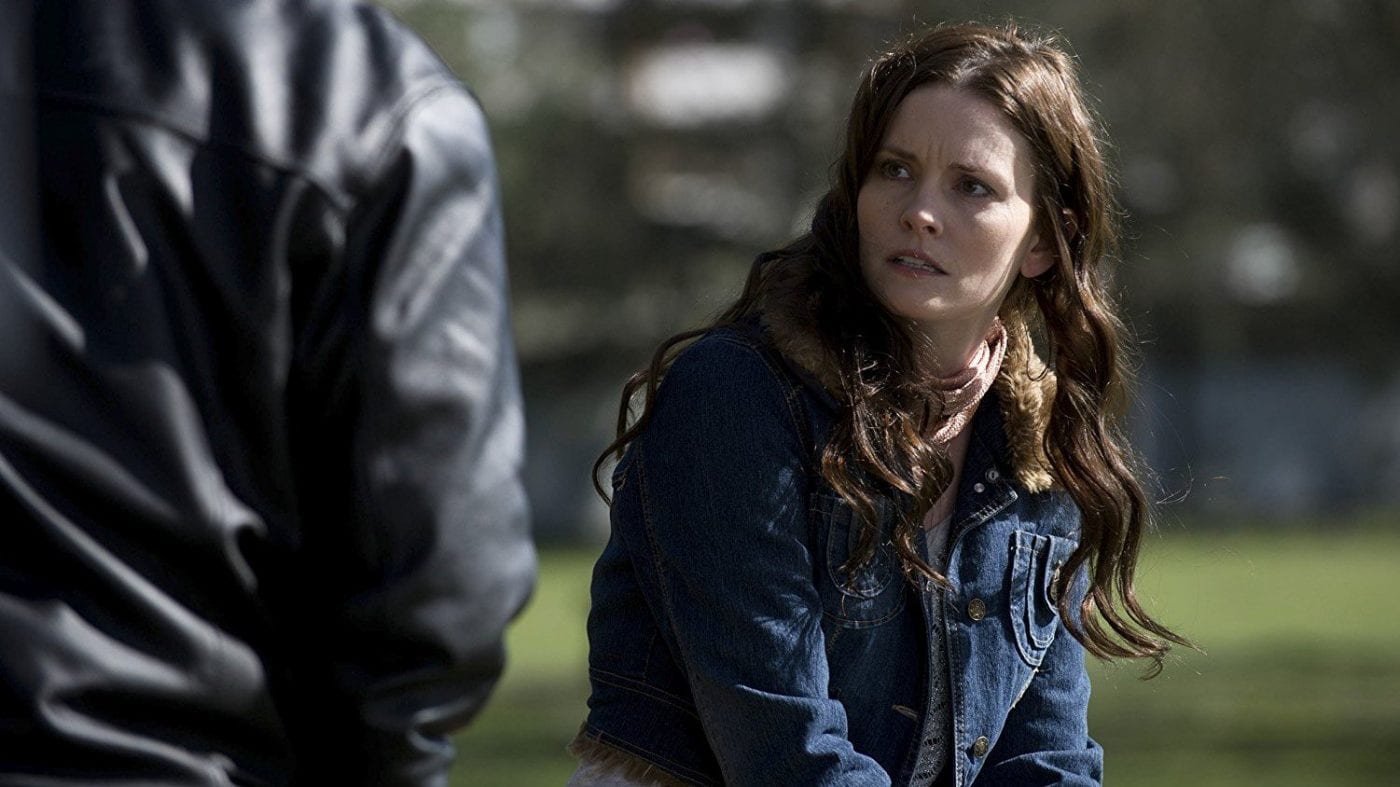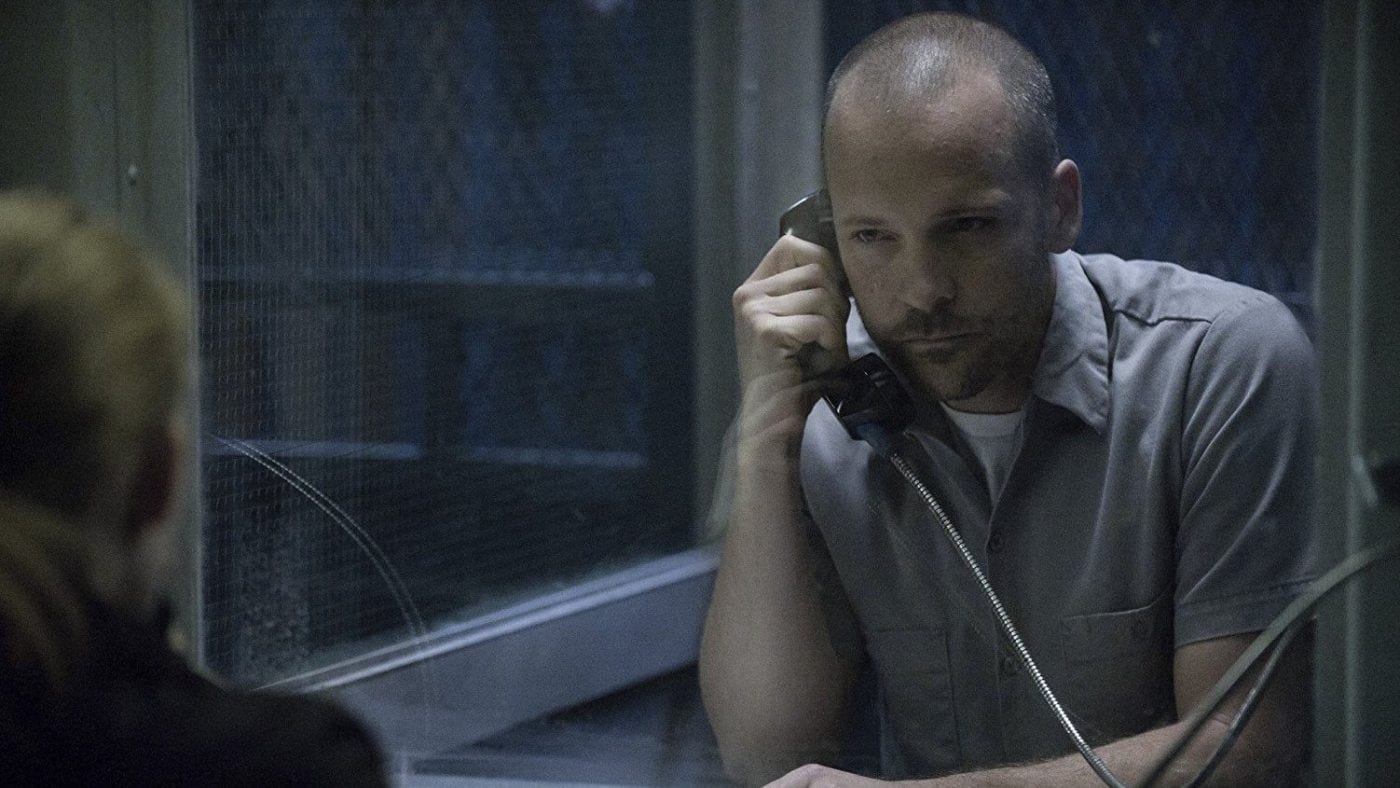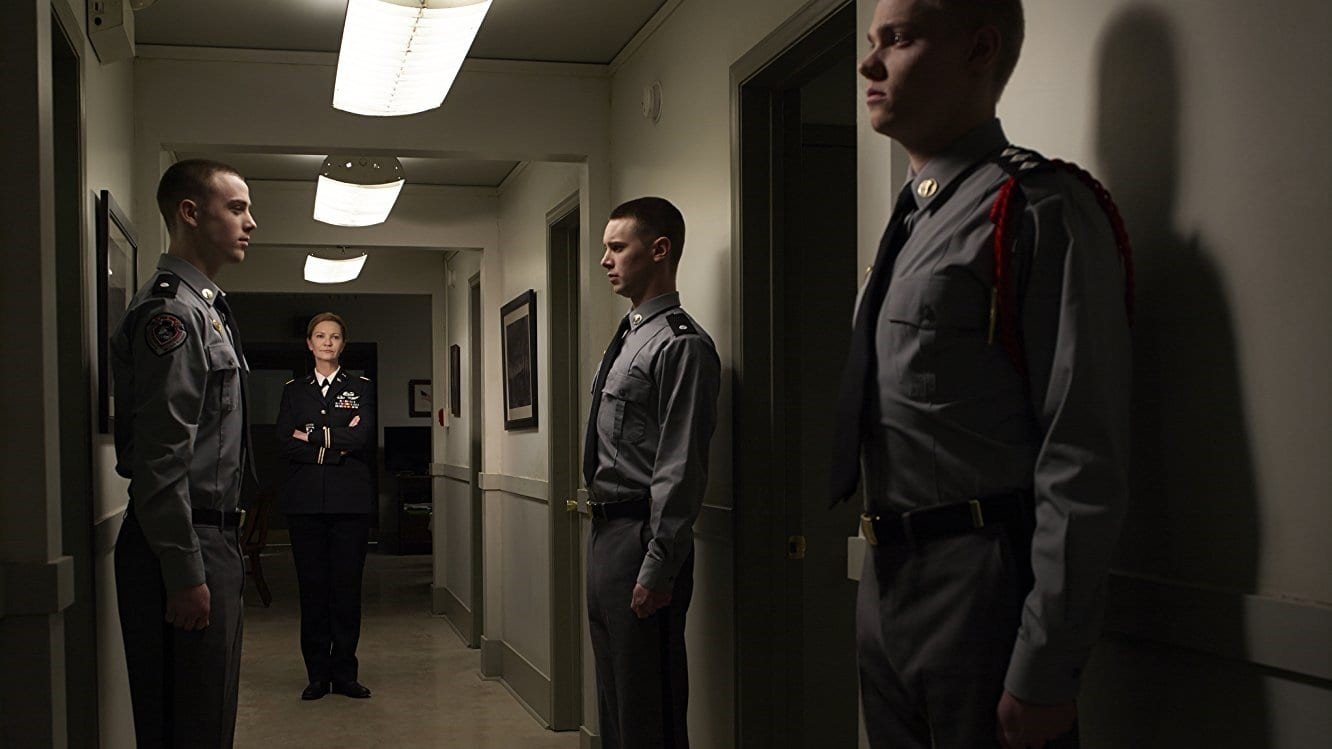New Evidence:
Linden confronts Councilman Richmond by referring to him as Orpheus, and he explains to her the myth behind the name. After receiving a call from Holder, Linden exits Richmond’s home and our two detectives meet outside. Linden and Holder discuss their next move, as they need actual solid evidence that Richmond is responsible for Rosie’s death. Firstly, they focus on the campaign car in which Rosie was found. After looking through the records, Linden notices a discrepancy between the amount of fuel recorded compared to its actual quantity. They theorise that Richmond must have filled the tank, so they decide to focus on gas stations within the proximity of the crime, hoping to find evidence such as credit card receipts or security camera footage. At the station, Linden and Holder try to work out the route they believe to have been driven by Richmond. Linden imagines that Richmond must have taken a longer, quieter route to protect his identity, which points to Desolation Bridge as a place of interest.
After the news of Richmond’s alleged affairs leak to the press, he publicly denies the allegations, but privately admits his guilt to Gwen. Linden talks to Lieutenant Oakes about Richmond, but he’s less than enthusiastic about her theory. Holder shows Linden the front page of the Seattle Daily Record, which reveals the women allegedly linked to Richmond. Unsurprisingly, they all have the same features as Rosie Larsen. Linden and Holder go to meet one of Richmond’s former employees, but despite seeming sad, she only has good things to say about the Councilman. On the road, Holder tries to figure out Richmond’s supposed route. He concludes that Richmond must have filled the tank at a gas station on Lowell Street, which is five miles from the area where Rosie was found in Discovery Park. The owner of the gas station claims to have seen a black car on the night of Rosie’s death and remembers to have heard a girl screaming while he was doing inventory. He didn’t see the driver and didn’t report the incident to the police, as the driver paid what he owed.
Holder asks to see the receipts, and outside, Linden finds the outer edge of Discovery Park. Linden speculates that Rosie must have run three miles from the gas station into the woods, all while being hunted and eventually caught by her killer. Later in the evening, an officer finds Rosie’s missing shoe, and Linden leaves the scene to pay Richmond a visit. Upon her arrival, Linden provokes Richmond by forcing him into a heated argument after several accusations are made. With his fists clenched close to Linden’s face, Richmond aggressively denies any wrongdoing, while a scared Gwen hides out of sight, listening to their dispute. In the parking lot, Linden finds Gwen, and she announces that she lied about Richmond’s alibi. Gwen tells Linden that on the night of Rosie’s death, Richmond went missing for hours and arrived home soaking wet at dawn. She then hands Linden the tape of Rosie and Richmond meeting at one of his campaign rallies.
Linden discloses the information to Oakes, and Holder provides even more evidence when he hands them security camera photos of Richmond. He’s seen driving the matching campaign car on Desolation Bridge, and the timestamp indicates he was there early Saturday morning. The police arrive to arrest Richmond, and we then see him being processed at the station. Linden and Holder congratulate each other for their work, and Linden finally prepares to leave for California with Jack. At home, Belko is seen cleaning his gun while watching the news about Richmond on TV. Once again, Linden and Jack arrive at the airport, but things are halted when she receives a call telling her the camera footage from Desolation Bridge won’t be made available, as they’ve been out of service for months. Obviously, this means Holder faked the photos, which is confirmed when we see him enter a mysterious car and declare to the unseen driver, “Photo worked. He’s goin’ down.” The episode (and the season) ends with Linden left undecided on the plane, as Belko pulls a gun on Richmond in public, which leaves the narrative and the Rosie Larsen murder mystery wide-open for Season 2 of The Killing.

The Suspects:
So, things are really left up in the air after the Season 1 finale, aren’t they? The whole season had been leading to this point, and yet, we’re no closer to discovering the truth, as it looks like Councilman Richmond is being set up to take the fall for a crime he probably didn’t commit. Linden and Holder are sure that Richmond is guilty, and the pressure of the past couple of weeks is visibly having an immeasurable impact on Richmond’s life. Earlier in the episode, during a conversation with Richmond, Jamie questions him about any personal secrets, but the Councilman seems confident when he replies, “Relax, please. There’s nothing to worry about.” Though, he wasn’t to know that he was being framed for Rosie’s murder and that Belko would draw a gun on him. Sucks to be you, Richmond. After the discovery of Rosie’s missing shoe, Linden goes to see Richmond and aggravates him into a shouting match.
Richmond has finally had enough of the accusations and furiously screams at Linden, “You have no right! For two weeks, you’ve been trying to burn me, ruin me and all the hard work I’ve done! Now that I am so close, the things I have had to do!” After further questioning, Richmond announces, “I did nothing to that girl. Nothing. Look at me. You know that I am telling the truth.” And, as we later find out, he may well be telling the truth, because we know Holder faked the security camera photos, which leaves the investigation in limbo. If Richmond is indeed innocent, why would Holder fake the photos and want to destroy his career? And, if not Richmond, who then is responsible for the death of Rosie Larsen?
What Year Is This?
I hope I’ve made a pretty convincing argument about The Killing’s relation to Twin Peaks while covering the first season of the show. And, with the Season 1 finale, it seems like showrunner Veena Sud might have learned a thing or two from Mark Frost and David Lynch. Like Twin Peaks, the first season of The Killing ends with a number of cliffhangers, presumably constructed to ensure its renewal for a second season. Yes, it’s frustrating, but it’s also very clever from the standpoint of long-form storytelling. People expected to find out the truth about Laura Palmer’s murder during Episode 7 of Twin Peaks but were instead subjected to an episode full of near-fatal shootings, a suicide attempt, at least one murder, and the explosion at the sawmill. Likewise, after its first season, The Killing is no closer to revealing Rosie Larsen’s killer, as Season 1 ends with Belko moments away from pulling the trigger on Councilman Richmond, which is almost exactly how Season 1 of Twin Peaks ends when we see the attempted assassination of Agent Cooper. But, luckily for you, I won’t be making y’all read another 13 articles covering Season 2 of The Killing, as I’ll be revealing all (with spoilers) after the break!
So, who killed Rosie Larsen? After two seasons, 26 episodes and around about a dozen suspects, the reveal was quite surprising, to say the least. It was Terry (Rosie’s aunt) who was ultimately responsible for her niece’s death. A series of unfortunate wrong time, wrong place-style events led to Rosie being kidnapped, which in turn placed her aunt at the crime scene. Unbeknown to Terry, it was Rosie who was trapped in the trunk of the campaign car, although her actions should not be played down, as she was willing to kill whoever was in the car regardless of the situation. We learn that it was Jamie who hunted, beat and kidnapped Rosie after she accidentally stumbled upon a conversation between him, Michael Ames and Nicole Jackson, who had come together at the Wapi Eagle Casino to hatch a plan that would guarantee Richmond winning the election.

Earlier in the Season 2 finale (directed by Patty Jenkins), Linden and Holder first believe Jamie to be responsible for Rosie’s death, and upon their arrival to arrest him, Jamie commits suicide by cop when he points a gun at Linden. Holder, rightfully, shoots Jamie, though we later find out that Jamie’s gun wasn’t loaded. After thinking the case is closed, Linden and Holder go to deliver the news to the Larsen family. Terry is there to greet them, and Linden notices a broken taillight on her car, which matches a description made previously by Rosie’s ex-boyfriend, Jasper Ames. Linden confronts Terry, and she begins to reveal the truth. Terry and Michael Ames were having an affair, and while Jamie and Ames were by the lake in Discovery Park arguing about what to do with Rosie, Terry got out of her car and forced the Richmond campaign vehicle into the lake. Little did she know that it was Rosie who was trapped and drowning while screaming for her life.
“I didn’t know. I didn’t know it was Rosie,” sobs Terry, as she finally confesses the truth to Linden, Holder, Mitch and Stan. It’s a devastating revelation that genuinely brings a tear to my eyes. The scene is so well-handled and stunningly acted, which is further enhanced by the emotional inclusion of a variation of “Time” by Hans Zimmer. So, how do you feel about Terry being the killer of Rosie Larsen? Did you think it was going to be someone else or did the truth meet your expectations? At this point, I think it would be remiss of me not to mention the difference between the revelation in The Killing and its originator, Forbrydelsen. In the latter, we learn that the killer of Nanna Birk Larsen is none other than the Danish equivalent of Belko, Vagn Skærbæk. Would you have preferred Belko to have been named the killer of Rosie Larsen? Not me, personally, as I think the reveal of Terry is far more distressing given that she and Rosie were relatives.
With the question of “Who Killed Rosie Larsen?” finally answered, let’s look at Seasons 3 and 4 of The Killing, shall we?
If you’ve followed me on Twitter for quite a while, you’ll know that not only do I believe Season 3 of The Killing to be its best, but it’s also one of my favourite ever seasons of TV. If you have any awareness of The Killing’s history, you might remember that it was originally cancelled after two seasons but was revived when Netflix came in and struck a deal with Fox Television Studios, which allowed the show to stay at AMC. Given its somewhat unusual renewal, Season 3 of The Killing can be seen as a semi-reboot of sorts. Out of the entire main cast from Seasons 1-2, Linden and Holder are the only pair to return (except for minor recurring characters such as Jack and Regi). When you think about it, it’s kind of crazy to completely move away from the Larsen family and the Richmond campaign, as they were both a huge part of the show.
But, in saying that, it also allowed The Killing to start afresh, without the baggage of its previous storyline. And that, in my opinion, is why Season 3 is superior to what had come before. Season 3 picks up one year after the conclusion of Season 2, and its mystery directly connects to an aforementioned murder case from Linden’s past. Said case was often referred to throughout the initial run of the show, most notably in a conversational scene between Linden and Holder from the standalone Episode 11 aka “Missing.” This kind of plot device is an extremely clever way of restating the show, as it allows for an all-new investigation, all while tying back to threads that were previously sewn throughout the first two seasons.

Besides the brand-new investigation, Season 3 features an almost completely new supporting cast full of talented actors like Amy Seimetz, Aaron Douglas, Jewel Staite, and as I’ve previously mentioned, Twin Peaks’ very own Grace Zabriskie as a memorably sinister motel owner. In addition to the performers I’ve listed, Season 3 features two incredible performances that stand out from the crowd: Bex Taylor-Klaus as Bullet and Peter Sarsgaard as Ray Seward, respectively. Bullet is one of the many teenage runaways who play a crucial role in this season, but Taylor-Klaus elevates her part beyond that of her co-stars with her tough, badass style and attitude. And, despite her small stature compared to her verbal sparring partner, Holder, she more than matches his streetwise toughness and their relationship is one of the highlights of the season. If you, like me, are a fan of Bex Taylor-Klaus’ work in Season 3, you might wanna check out MTV’s Scream: The TV Series for more of her work.
Other than Taylor-Klaus, Peter Sarsgaard delivers Season 3’s finest performance as death row inmate and possible innocent victim of the criminal justice system, Ray Seward. Sarsgaard is one of those truly great “actors’ actors” whose work often doesn’t get the attention it deserves, despite him stealing many of the projects in which he’s involved. One of the biggest arcs of the season spotlights whether or not Ray is actually guilty of the crime for which he’s serving time, and it’s a testament to Sarsgaard’s ability when we start to feel oddly sympathetic for a man sentenced to death for murdering his wife. Sarsgaard should have won an Emmy for his performance as Ray Seward in Season 3 of The Killing. It’s a travesty that he wasn’t even nominated.
Despite being cancelled for the second time after Season 3, The Killing refused to die and returned once again for one final season on Netflix. Season 4 feels distinctly different to the first three seasons of the show, notably because its episode order was cut in half to only six, and thanks to Netflix’s lax restrictions, The Killing took full advantage of being able to use strong language and even more adult themes. It’s weird to hear characters you’ve followed for years start to swear like they have been all along, isn’t it? Kind of like the difference between Twin Peaks, Twin Peaks: Fire Walk with Me and The Return. Season 4 sees Linden and Holder try to deal with the repercussions of their actions in the earth-shattering Season 3 finale, as well as investigating a new murder case tied to a military academy headed by three-time Academy Award-nominated actress, Joan Allen.
In my opinion, Season 4 never reaches the heights of Season 3, but when the final scene fades to black, I couldn’t have imagined a more perfect ending for The Killing. Linden and Holder have always been the focal point of the show and Season 4 sees their relationship pushed to new limits, due, in part, to their actions in Season 3. The chemistry between Mireille Enos and Joel Kinnaman is some of the best modern TV has seen, and it makes me incredibly happy to know that they’ll soon be reteaming for Amazon’s TV adaptation of Hanna. TV shows rarely get to end on their own terms, as cancellation too often looms over shows with smaller, cult audiences. And, while The Killing had to wade through some rough waters, it’s pretty astonishing that it got to go out on such a poignant note, which was respectful to both its characters and its audience.

Series finales are hard, like, really hard to get right. Seriously, just ask a room full of fans of Lost and The Sopranos, as I’m pretty sure there would be an even 50/50 split between those who loved and hated those finales. Today, it seems like it’s the norm to end a show with a bang, but the series finale of The Killing (directed by Jonathan Demme) is neither big or loud or game-changing. Instead, it’s small and emotional and perfectly judged, leaving viewers with a sense of finality and closure, which we—as fans of Twin Peaks—know isn’t always the case. Linden and Holder started the show as two cops forced together during a murder investigation, but by the end of Season 4, their lives are forever connected and that is why I love their relationship and The Killing.
And, so ends “The Autopsy of The Killing.” It has been an absolute blast to revisit and retrospectively cover one of my favourite shows for 25YL and I appreciate each and every view. Hopefully, more people will find this series in the coming years and will enjoy the mysteries investigated through the eyes of Linden and Holder. If you have enjoyed this series, I’d love to hear from you! Leave a comment below, and/or give me a follow on Twitter (@JonSheasby), and we’ll continue the conversation over there. Tak/Thanks!

